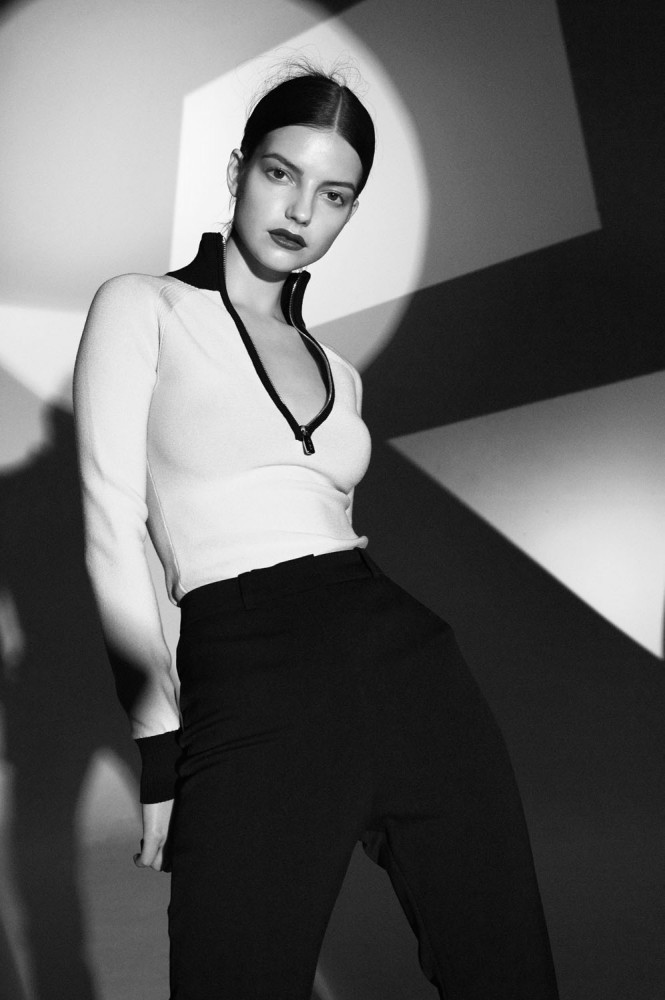
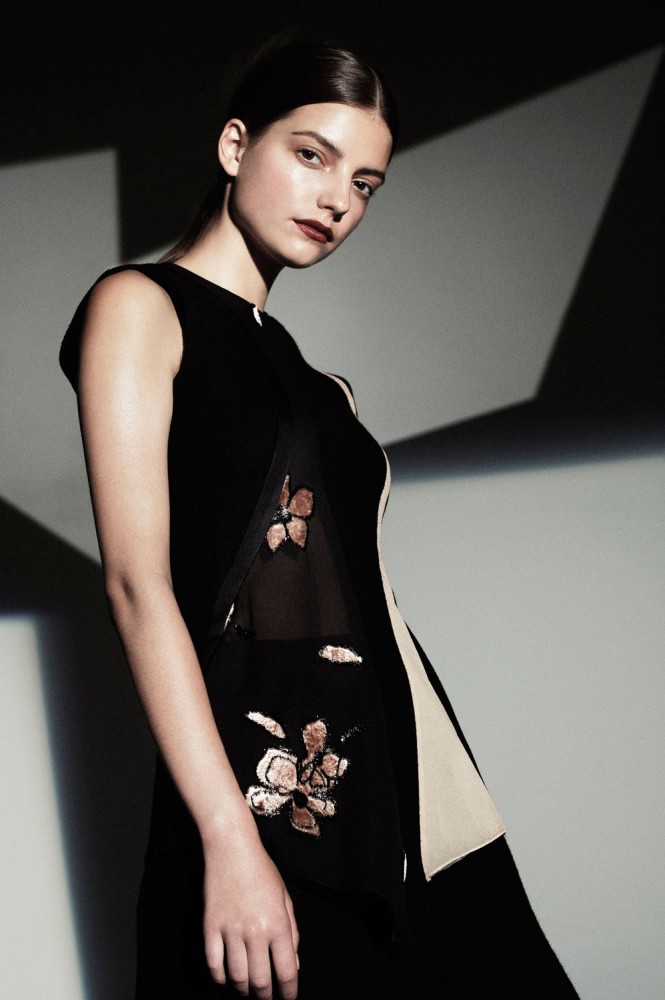
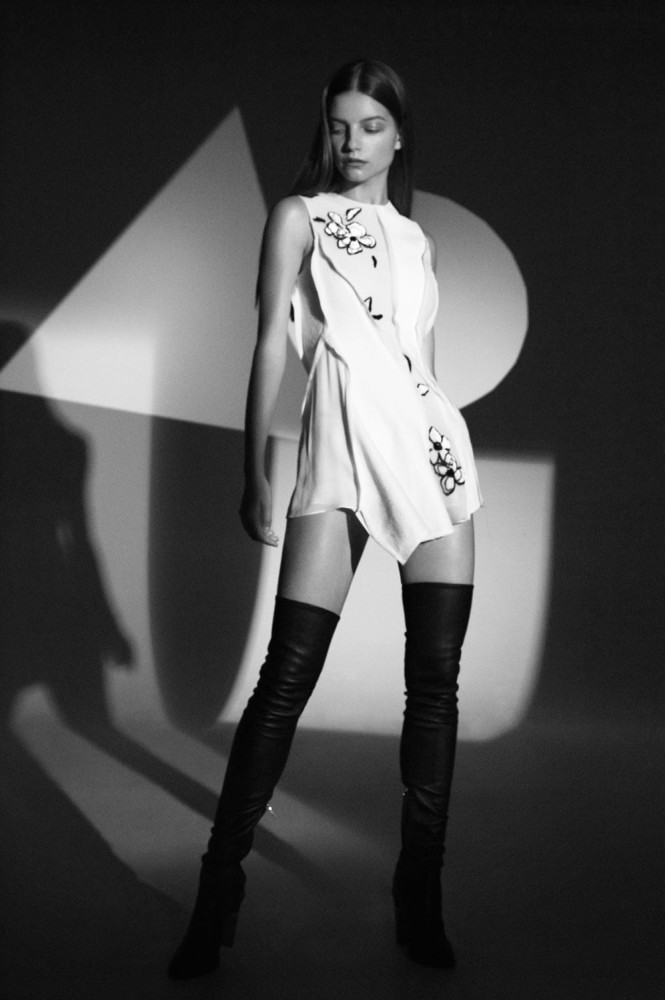
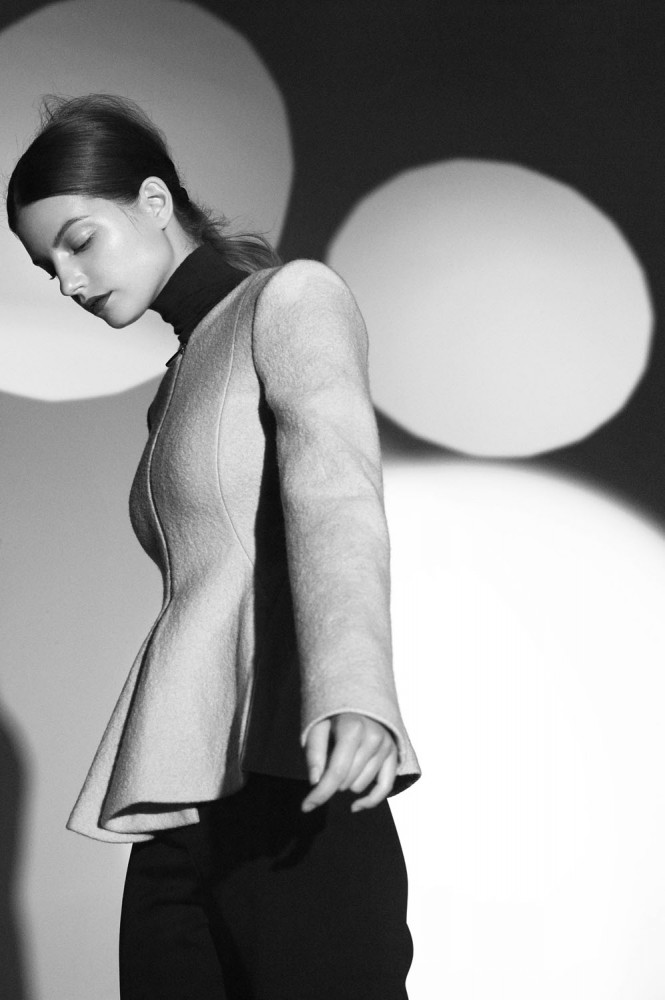
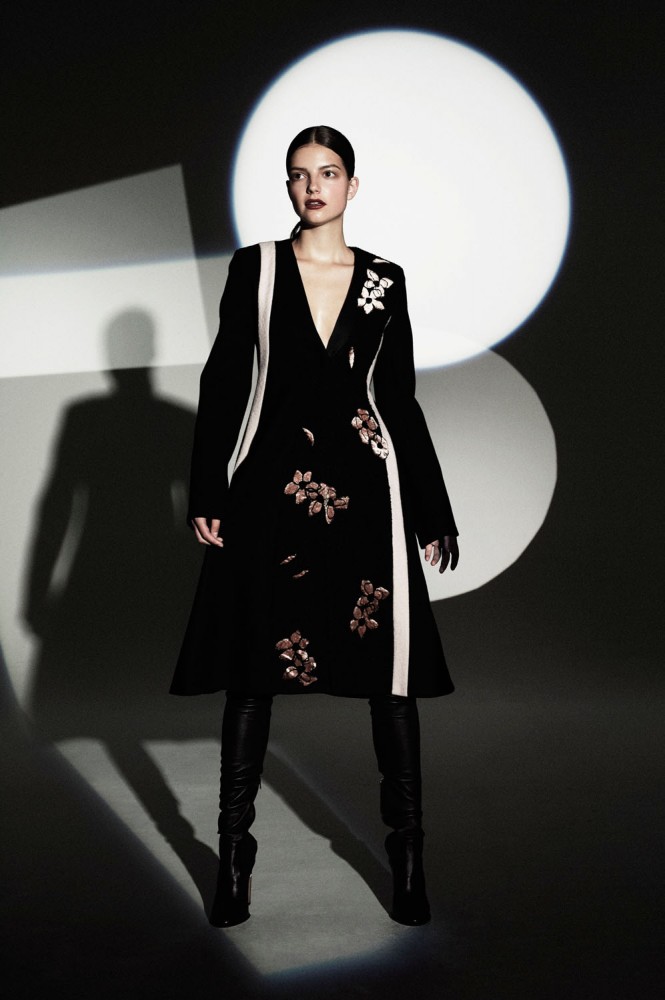
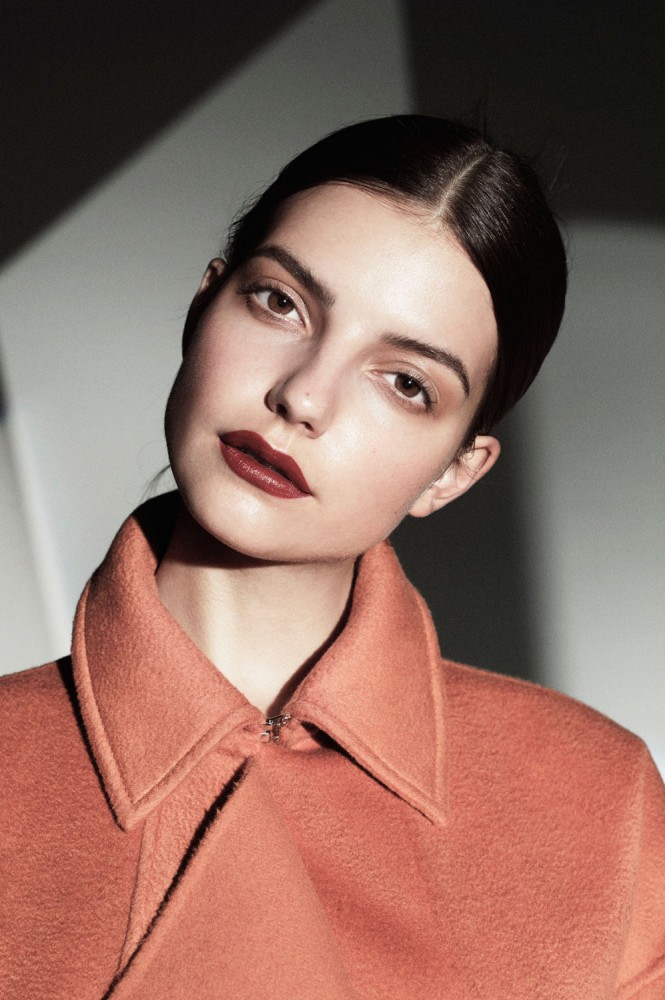
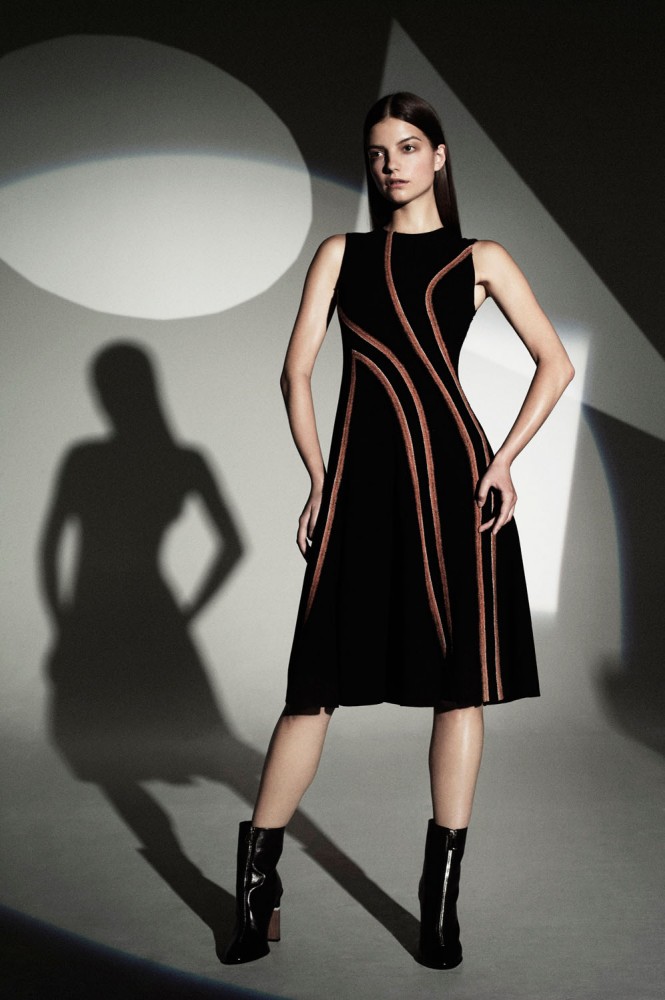
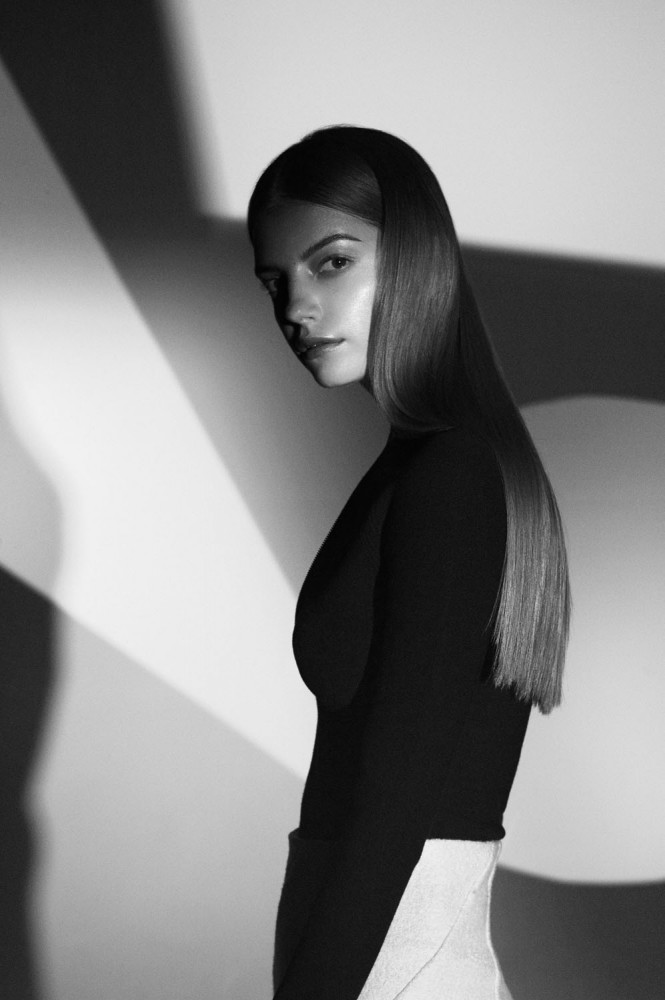
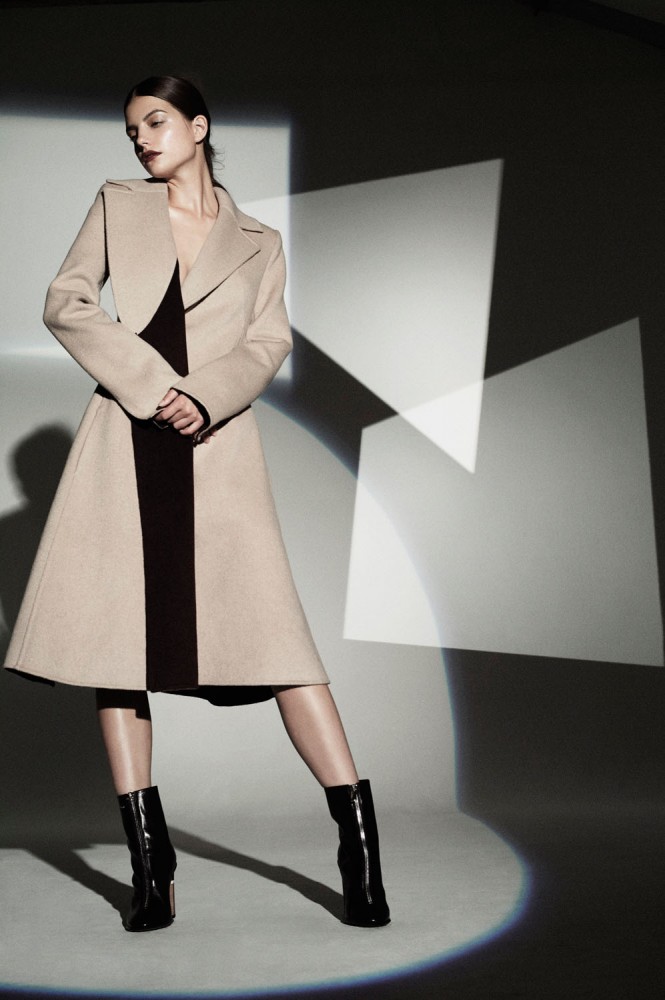
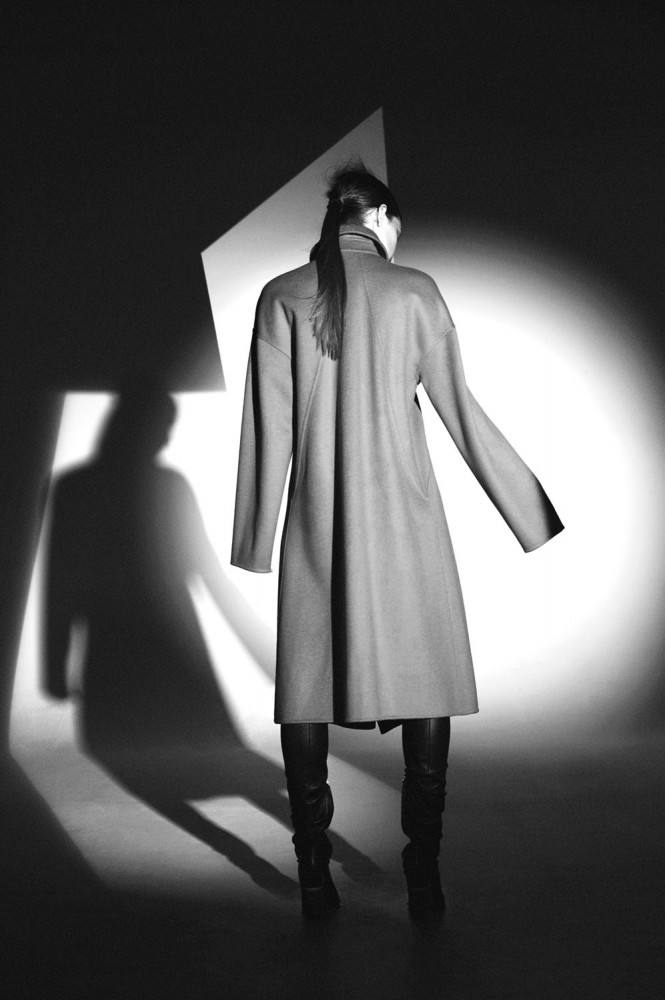












INTERVIEW
Benjamin Tietge
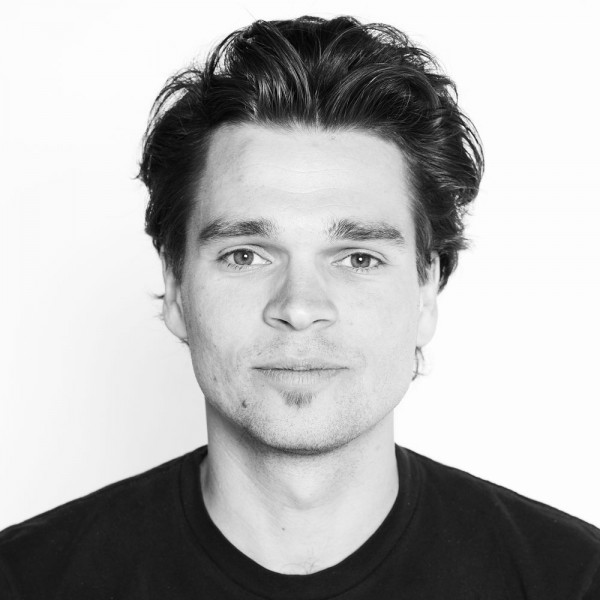
PHOTOGRAPHY Benjamin Tietge STYLING Kamran Rajput MAKEUP Siobhan Jessica Furlong using MAC HAIR Scott Jordan @ Taylor Taylor using Bumble & Bumble MODEL Dasha @ Wilhelmina PHOTO ASSISTANT David Jenewein FASHION Hugo Boss CAMERA Leica S (Typ 006)
Circles, triangles and squares, the basic elements of the Bauhaus movement of the twenties, form the creative framework for Benjamin Tietge’s ‘Bauhaus’ series – the lighting and the static poses taken by model Dasha, establish a reference to the expressionist and experimental films of the era.
You have worked as first assistant to many renowned fashioned photographers. Whose influence has lasted the longest?
I don’t think the question can be answered that easily. Each of them was impressive in their own particular way, which is why they have become so renowned. I always look back on that time with pleasure. I learnt and took with me something different from each one of them. I feel very honoured at having been part of that work, and to have also contributed a lot towards realising the various visions.
In the end, however, it all began a long time ago is a small still-life studio in Altona [Hamburg]. With this I just want to say that virtually every photographer I assisted influenced me at the time and continues to do so today.
After so many great names, how was it then for you to go it alone? What challenges did you have to overcome?
It was a big change, of course; it’s like you start from the beginning again. Even if one name or another can serve to open doors, at the end of the day, it’s you and your work alone that has to convince everyone. In that respect, it makes no difference who is on your CV. The beginning is difficult, regardless of what you do, so you mustn’t give up.
To what extent have these star photographers influenced your style, and have you already found your own signature? Can it be said that any one of your former employers has had a particular stylistic influence that has served to give you direction?
As I mentioned before, virtually all the photographers I assisted have influenced me, and right from the beginning. But, of course, I hope that sooner or later my own signature will be recognised, and people won’t just say, “oh yes, so and so’s former assistant”.
When I’m not taking photographs or involved in the post production, I do a lot of research in museums, galleries, at the cinema, theatre, ballet, or “music”, or just spending time on a park bench. I prefer to look at life for my inspiration. Life serves to give me direction.
How would you describe your style right now, and in what direction would you like to go?
I try to create a moment with each photo; some very abstract, others real and close. I want to shares these moments with the viewer, quasi putting him or her in my place so that it can be experienced directly. If I can continue to say this ten years down the line, then I’ll be very happy.
What is the series you photographed for the S magazine about? What function do the geometric components in the background play?
The concept for this series is made up of variations of the basic Bauhaus elements: the circle, the triangle and the square. However, rather than using sets, I wanted to use lighting – a key element of photography – to create them.
The model, who appears static and even stiff, makes reference to the dramatic presentation of photos at the time, but also to expressionist silent movies, and Bauhaus’s experimental films. With the interplay of light and shadow, as well as the model’s shadow in the background, I wanted to integrate the photo montage style of Laszlo Moholy-Nagy, a very important photo artist of the Bauhaus movement.
To what degree do you influence the post-production? Do you do it yourself?
From time to time, but it depends on when a deadline has been set and how many jobs I have behind and in front of me. In general, however, I’m not a big fan of retouching, and I try to create and catch the image directly on set and in the camera. Of course, it’s not something you can always achieve, and then I either do it myself if I’ve got time, or I give it to someone I trust. But also in this case I often handle it myself with a printer like I used to do, and then I sit together with the retoucher for a certain amount of time.
During your career as an assistant you had to deal with many camera systems, including various Leicas. What is your opinion of the S007? Who is it the right tool for?
I was really happy when the first S came out, and the 007 has brought some lovely updates.
What I love about Leica in general – I’m also a big fan and user of the M series – is its simplicity. I want a camera where I can set the aperture, the shutter speed and the ISO – all other bits and pieces on cameras only serve to bother me; I don’t need them and I don’t want them, and Leica has always perfected this concept.
Which S lens do you prefer to use?
Of course, it depends on the situation; but, in general, I always prefer a wider angle.
How do you see your future from the photographic perspective?
I’d like to end here with a quote by Henri Cartier-Bresson:
“We must avoid however, snapping away, shooting quickly and without thought, overloading ourselves with unnecessary images that clutter our memory and diminish the clarity of the whole.”